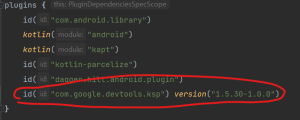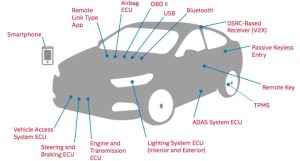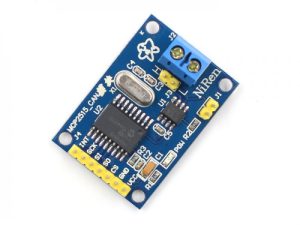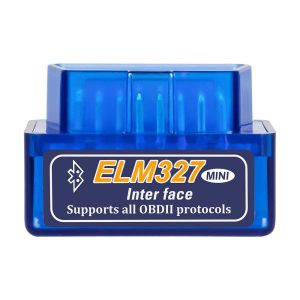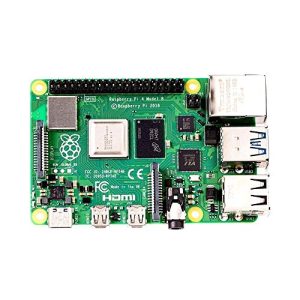Hacking is the act of gaining unauthorized access to a computer system or network. While hacking has a negative connotation, some people use their knowledge and skills for ethical hacking, which is also known as “penetration testing.” In either case, hacking requires specialized tools and gadgets to carry out the task at hand. In this blog, we will explore the top 10 popular hacking gadgets that are used by ethical hackers and cybercriminals alike.
- Wi-Fi Pineapple – This is a popular tool used for wireless network auditing and penetration testing. It is a small device that can be used to intercept Wi-Fi traffic, perform man-in-the-middle attacks, and capture sensitive information.
- USB Rubber Ducky – This is a USB drive that looks like an ordinary flash drive but is actually a keystroke injection tool. It can be used to inject malicious code into a computer system and gain access to sensitive information.
- Raspberry Pi – This is a small, single-board computer that is popular among hackers and hobbyists alike. It can be used for a wide range of hacking activities, such as running network sniffers, creating fake access points, and even launching denial-of-service attacks.
- LAN Turtle – This is another small device that is used for network penetration testing. It can be used to create remote access points, execute malicious code, and capture sensitive information.
- HackRF One – This is a popular software-defined radio that can be used to intercept and manipulate radio signals. It can be used for a wide range of hacking activities, such as intercepting cellular phone calls, hacking RFID systems, and even intercepting satellite signals.
- Proxmark3 – This is a powerful RFID hacking tool that can be used to clone RFID tags, capture and replay RFID signals, and even brute-force RFID encryption.
- Rubber Hose – This is a password cracking tool that is used to extract passwords from encrypted files. It can be used to crack a wide range of encryption algorithms, including AES, DES, and Blowfish.
- Nethunter – This is a powerful hacking tool that is designed for use on Android devices. It can be used to perform a wide range of hacking activities, such as sniffing network traffic, launching wireless attacks, and even hacking Bluetooth devices.
- Aircrack-ng – This is a popular tool used for wireless network penetration testing. It can be used to capture and decrypt Wi-Fi traffic, crack WEP and WPA encryption, and even launch de-authentication attacks.
- Metasploit – This is a powerful framework for developing and executing exploits. It can be used to launch a wide range of attacks, such as remote code execution, buffer overflow attacks, and even social engineering attacks.
In conclusion, these are some of the most popular hacking gadgets that are used by both ethical hackers and cybercriminals. It is important to remember that while these tools can be used for ethical hacking, they can also be used for malicious purposes. Therefore, it is important to use them responsibly and only with the consent of the target organization.
Let me provide some additional information about each of the hacking gadgets listed above:
- Wi-Fi Pineapple – The Wi-Fi Pineapple is a popular hacking gadget that is used for wireless network auditing and penetration testing. It can be used to create fake access points, intercept Wi-Fi traffic, perform man-in-the-middle attacks, and capture sensitive information. The device is popular among ethical hackers because it allows them to test the security of wireless networks and identify vulnerabilities before they can be exploited by cybercriminals.
- USB Rubber Ducky – The USB Rubber Ducky is a small USB drive that is used for keystroke injection attacks. It is designed to look like an ordinary flash drive, but it is actually a powerful hacking tool that can be used to inject malicious code into a computer system and gain access to sensitive information. The device is popular among ethical hackers and penetration testers because it allows them to test the security of computer systems and identify vulnerabilities that can be exploited by cybercriminals.
- Raspberry Pi – The Raspberry Pi is a small, single-board computer that is popular among hackers and hobbyists alike. It is a powerful hacking tool that can be used for a wide range of activities, such as running network sniffers, creating fake access points, and launching denial-of-service attacks. The device is popular among ethical hackers because it allows them to test the security of computer systems and identify vulnerabilities that can be exploited by cybercriminals.
- LAN Turtle – The LAN Turtle is a small device that is used for network penetration testing. It can be used to create remote access points, execute malicious code, and capture sensitive information. The device is popular among ethical hackers and penetration testers because it allows them to test the security of computer systems and identify vulnerabilities that can be exploited by cybercriminals.
- HackRF One – The HackRF One is a popular software-defined radio that can be used to intercept and manipulate radio signals. It can be used for a wide range of hacking activities, such as intercepting cellular phone calls, hacking RFID systems, and even intercepting satellite signals. The device is popular among ethical hackers because it allows them to test the security of wireless networks and identify vulnerabilities that can be exploited by cybercriminals.
- Proxmark3 – The Proxmark3 is a powerful RFID hacking tool that can be used to clone RFID tags, capture and replay RFID signals, and even brute-force RFID encryption. The device is popular among ethical hackers and penetration testers because it allows them to test the security of RFID systems and identify vulnerabilities that can be exploited by cybercriminals.
- Rubber Hose – Rubber Hose is a password cracking tool that is used to extract passwords from encrypted files. It can be used to crack a wide range of encryption algorithms, including AES, DES, and Blowfish. The device is popular among ethical hackers and penetration testers because it allows them to test the security of password-protected files and identify vulnerabilities that can be exploited by cybercriminals.
- Nethunter – Nethunter is a powerful hacking tool that is designed for use on Android devices. It can be used to perform a wide range of hacking activities, such as sniffing network traffic, launching wireless attacks, and even hacking Bluetooth devices. The device is popular among ethical hackers because it allows them to test the security of mobile devices and identify vulnerabilities that can be exploited by cybercriminals.
- Aircrack-ng – Aircrack-ng is a popular tool used for wireless network penetration testing. It can be used to capture and decrypt Wi-Fi traffic, crack WEP and WPA encryption, and even launch de-authentication attacks. The device is popular among ethical hackers and penetration testers because it allows them to test the security of wireless networks and identify vulnerabilities that can be exploited by cybercriminal
Advantages:
- Efficient testing – Hacking gadgets are specifically designed for hacking and penetration testing purposes, which makes them highly efficient in identifying vulnerabilities in computer systems and networks.
- Cost-effective – Many hacking gadgets, such as the Raspberry Pi, are affordable and can be used for a wide range of hacking activities, making them a cost-effective alternative to expensive security testing software.
- Wide range of capabilities – Hacking gadgets come with a wide range of capabilities, including network sniffing, password cracking, and Wi-Fi signal interception. This allows ethical hackers to test the security of computer systems and networks thoroughly.
- Portability – Many hacking gadgets are small and portable, which makes them easy to carry around and use on the go.
Disadvantages:
- Legal concerns – Even though hacking gadgets are designed for ethical hacking purposes, there is a risk of legal repercussions if they are used for malicious purposes.
- Limited support – Hacking gadgets are often developed by small, independent teams, which means that they may have limited support and documentation available.
- Technical expertise – Hacking gadgets require technical expertise to use effectively, which means that not all security professionals may be able to use them to their full potential.
- False sense of security – While hacking gadgets can be useful for identifying vulnerabilities in computer systems and networks, relying solely on them for security testing can create a false sense of security. Ethical hackers must use a variety of testing methods to identify and address all potential vulnerabilities.


